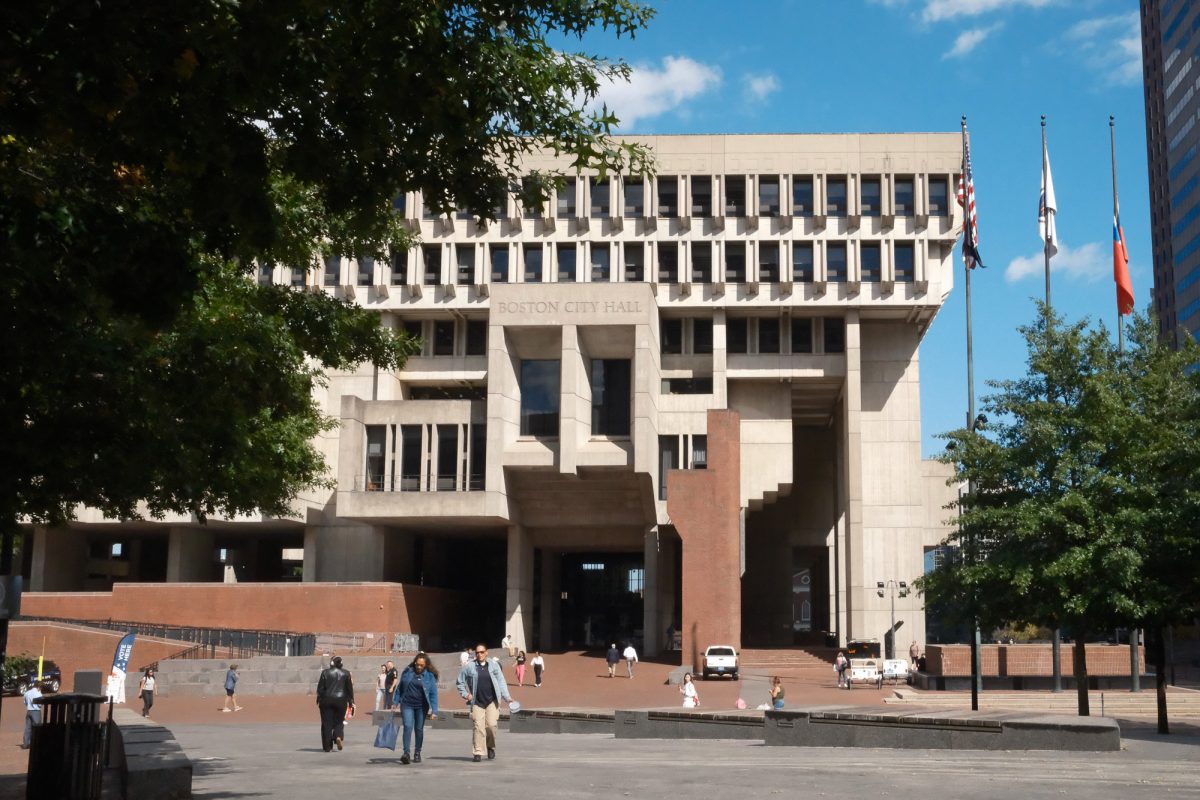After the recession hit Boston, big-time developers were forced to scale back many of their largest projects, leading to a rare sight in many swaths of the Hub: streets with no construction on them.
Lawmakers hoping to alleviate surging unemployment rates answered by pumping hundreds of millions of dollars into Massachusetts on the state and federal level, fixing bridges, roads and water lines to try to keep the commonwealth from hemorrhaging jobs.
State officials hope Newton-based Meredith Management’s 1.2 million square-foot, $450 million office and apartment complex near Fenway Park will give the area the boost it needs.
“Jobs are a huge factor,” said Meredith Management President John Rosenthal. “We are a solution.”
New England Sports Ventures, a subsidiary of the Boston Red Sox, also has a stake in the project.
Even as government-financed projects surge ahead, many private developers in the Bay State have yet to get back on their feet. The Filene’s Basement mixed-use project at Downtown Crossing remains a gaping hole in the ground, and the company financing a group of condominiums over the Massachusetts Turnpike around Columbus Avenue ran out of money.
Enter Fenway Center. After seeing other projects fail, the state has put its weight behind the first phase of the project planned between Fenway Park, Kenmore Square and the eastern edge of Boston University.
The complex, built partially over the Massachusetts Turnpike, would include a 700-car garage, 200 units of mixed-income housing and 370,000 square feet of office space.
Rosenthal’s company plans to break ground in August on a $12 million upgrade to the Yawkey commuter rail station.
The new station would include street-level entrances, two more tracks and solar panels to power the station’s lights and elevators. It would also allow the Massachusetts Bay Transportation Authority to increase its stops at the station to 41 a week from the 14 provided now, Rosenthal said.
In the first phase, the developer plans to build a garage, also equipped with solar panels, for Fenway Park fans and workers at the nearby Longwood Medical Area, and an apartment building facing the stadium.
Rosenthal then plans a second phase of apartments and office buildings capped off with a 27-story office tower to serve as a “landmark” for the area.
FINDING ITS FOOTING
Like many projects its size, however, Fenway Center has not yet secured financing for either phase of the project.
“We have commitments for it, but it’s not closed until it’s closed,” Rosenthal said.
The state, not wishing to see another shovel-ready project turn to dust, has done its part to see the project through by arranging a lease deal in October that will put off some of the developer’s construction costs for a while.
The state offered to speed up the deal by temporarily waiving some of the fees for developing over the Turnpike, which it will still technically own even as it leases the air above it for a 99-year period. Then, after the project starts making money, Meredith would pay the Turnpike Authority back with the proceeds.
Rosenthal said the agreement was necessary for complex projects like Fenway Center to effectively cost the same as a similar project on land would.
The developer is also seeking up to $40 million in federal new market tax credits and will also finance the garage and apartment complex with tax-exempt bonds.
Projects like Kenmore Center rarely get off the ground without some sort of state support, City Council President Mike Ross told The Daily Free Press outside a nearby neighborhood meeting last month.
“There’s no way that this was going to get built without some outrageous subsidy,” Ross said, noting the millions the state provided for construction of the Copley Place Mall during the 1980s. “It has to be done.”
STILL UP IN THE AIR
The project, if completed, would also dramatically alter the landscape at the eastern edge of BU’s campus, making it easier to walk across the now wind-swept stretch of Beacon Street leading to Kenmore Square.
“BU has been very supportive of covering up the Turnpike and improving the commuter rail station,” Rosenthal said. “They just wanted to make sure that the architecture didn’t seem like a monolithic wall” along the street.
Neighborhood groups also initially protested the relatively massive scale of the project’s planned office towers. Under pressure, the developer redrew his plans to step the project down toward the smaller, older neighborhoods next door.
“We changed the design several times based on feedback we received from the neighborhood groups as well as Boston University,” Rosenthal said. “There was a consensus that we should step the building seven stories down toward Audubon Circle and seven stories down toward Fenway Park and have one tall building as a landmark above Yawkey Station.”
Some residents of the Audubon Circle area expressed mixed feelings about the changes planned for their area. Resident Richard Ong said the area of parking lots and treeless bridges looks “blighted” now, but he added that the project might change the character of the buildings around it.
“In an ideal world, if I could say “do it in somebody else’s neighborhood,’ I’d say “do it,’ but that’s not the way it works, of course,” Ong said. “It’s kind of a quaint neighborhood right now, and this is huge.”




















































































































